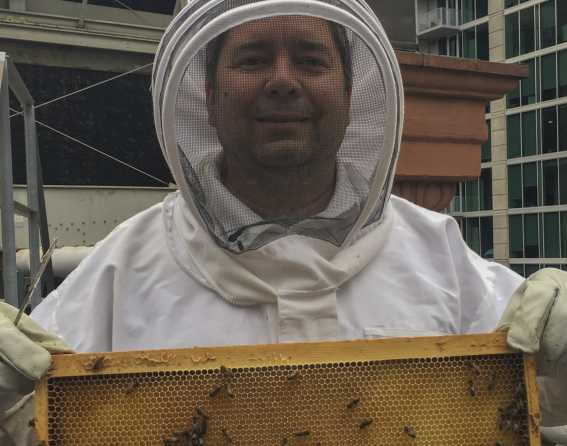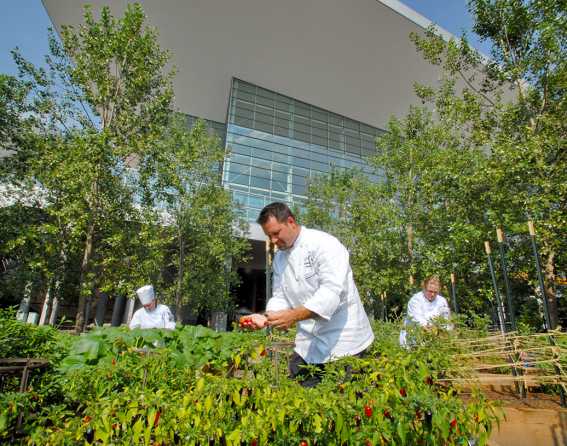Denver is doing its part to help sustain the U.S. bee population by maintaining hives in the downtown area. The honey is used by chefs in culinary creations or by spa professionals in unique treatments. Here are two examples of what's happened since the Denver City Council approved urban beekeeping in 2008.
On an Iconic Hotel Rooftop
The Brown Palace Hotel and Spa was among the first hotels or public attractions to consider the idea of adding beehives onsite and made it a reality in late 2009. The property has occupied a prominent downtown Denver corner for more than 125 years and the hotel’s staff went all out to welcome the bees to their 10th-story rooftop and devise all sorts of unique uses for the resulting golden nectar. A social media contest was conducted to name the hives. "Buzzidential Sweet," "Buzzingham Palace," "Mile Hive City" and "V.I. Bee Sweet" were among the winners.
There have been up to five bee colonies on the rooftop that share space with an herb garden used by hotel chefs. “There are years where the colonies have self-destructed; it’s a delicate process,” says Sales and Marketing Director Mark Shine.
Interesting Bee Facts
Honeybees live only five to six weeks in the spring and summer, whereas bees in the winter live for about five months.
The queen bee usually lives for about three years and lays up to 2,000 eggs per day in the spring and summer.
A hive contains approximately 60,000 bees in the summer.
To collect enough nectar to make one teaspoon of honey, it takes a dozen bees their entire life.
The bees have attracted an incredible amount of interest, Shine confirms, adding that the hotel’s former managing director, Marcel Pitton, helped the bee initiative take flight. “Bees are the right thing to do,” he says, “and people are just really curious about it.”
You can find Brown Palace Honey Wheat beer onsite at the Ship Tavern, which is made with honey from the rooftop bees. The honey is also sold in the coffee shop and “at times” used in spa treatments.
Ed Moore started beekeeping at The Brown Palace in 2015 and says honey is typically harvested in the fall, if there is a surplus of honey. “Mature hives need approximately 75 pounds of honey to eat during the cold winter months. Any additional honey, above what the hive needs to survive winter, can be harvested.”
Raising bees in downtown Denver isn’t much different than having them in a backyard apiary, he notes. “Bees typically will forage up to three miles from the hive for nectar. Locations like Civic Center Park and the Denver Botanic Gardens are both within the normal foraging distance for bees at The Brown Palace.”
In a Convention Center Garden
The 5,000-square-foot Blue Bear Farm at the corner of Speer Boulevard and Stout Street next to Colorado Convention Center shows just what can happen when urban beekeeping and urban farming unite. It’s one of the few convention center gardens of this magnitude, and the beehive produces liquid gold, which helps plants flourish.
The farm belongs to Sodexo Live!, caterer for the convention center and the nearby Denver Performing Arts Complex (DPAC), and provides welcome fresh produce and honey used in dishes served at the convention center DPAC. Founded in 2012, Blue Bear Farm ideally produces 5,000 pounds of produce and 100 pounds of honey annually.




